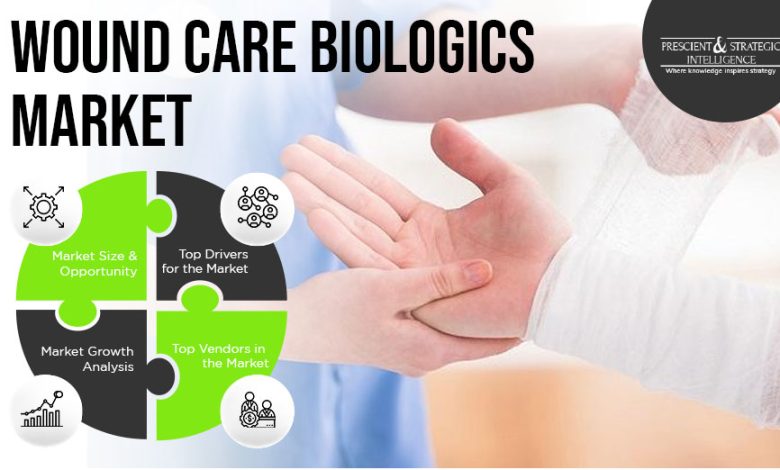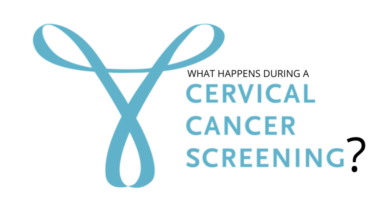Wound Care Biologics Market Analysis, Segments, Top Key Players, Drivers, and Trends

Wound Care Biologics Market Overview
The global wound care biologics market revenue stood at $1.4 billion in 2018, and it expected to surge to $2.0 billion by 2024. According to the estimates of the market research company, P&S Intelligence, the market will progress at a CAGR of 7.0% from 2019 to 2024 (forecast period). The surging population of geriatric people, growing prevalence of burns and accidents, soaring number of surgeries, and increasing occurrence of chronic wounds are the major factors propelling the growth of the market across the globe.
According to the World Population Ageing 2020 report published by the United Nations Department of Economic and Social Affairs (UNDESA), the population of people aged 65 years or above will rise from 727 million in 2020 to more than 1.5 billion by 2050. Since geriatric people have weaker body functions and thus, they need longer recovery time periods for healing from wounds, their growing population is propelling the worldwide demand for wound care biologics.
Growth in Wound Care Biologics Market During Forecast Period
Besides, the surging number of burn injuries caused due to chemicals, radiation, friction, electricity, and heat is also fueling the expansion of the wound care biologics market and creating immense growth opportunities for the players operating in the market. As per the National Fire Protection Association (NFPA), around 662,500 fire injuries were recorded in the U.S. in 2016. Further, according to the World Health Organization (WHO), nearly 180,000 deaths occur each year because of burns, particularly in low- and middle-income countries.
Additionally, non-fatal burns are the major cause of morbidity all over the world. Wound dressing products, such as sponge, collagen dressings, gauzes, bandages, hydrogel dressings, and hydrocolloid dressings, play a crucial role in treating burns. Depending on product, the market is classified into skin substitutes, growth factors, collagen-based, cell-based, and enzyme-based. Out of these, the skin substitutes category is predicted to demonstrate the fastest growth in the market in the coming years.
Emerging Countries to Drive Market Growth
This is ascribed to the fact that these products have an intact extracellular matrix structure and facilitate the development of natural dermis. Additionally, skin substitutes have re-epithelialisation characteristics. The wound care biologics market is also categorized, on the basis of application, into chronic wounds and acute wounds. Between these, the chronic wounds category contributed higher revenue to the market in the past. This was because of the high incidence of chronic wounds, including pressure ulcers, venous leg ulcers (VLUs), and diabetic foot ulcers (DFUs).
Geographically, the Asia-Pacific (APAC) and North American regions are predicted to account for more than 65% of the revenue share in the wound care biologics market in the forthcoming years. This is credited to the existence of several market players, growing healthcare expenditure, and surging research and development (R&D) activities in the region. The European region is also exhibiting rapid expansion, on account of the growing incidence of burns in the regional countries, such as Germany, which is predicted to dominate the regional market in the coming years.
Strategic Analysis
Hence, the demand for wound care biologics will soar in the coming years, mainly because of the rising prevalence of chronic wounds and mushrooming population of geriatric people all over the world.
Due to the surging population of ageing people, the healthcare expenditure of several countries is growing rapidly. This is credited to the fact that geriatric people require extensive medical care, as they are highly vulnerable to various illnesses, because of the low immunity levels. Moreover, they have weakened body functions such as reduced collagen deposition and impaired blood circulation and as a result, wounds in their body need longer recovery periods to heal in comparison to that of younger adults.
As per the World Population Aging report published by the United Nations Department of Economic and Social Affairs (UNDESA). The population of individuals in the age bracket- 60 years and above- grew from 382 million in 1980 to 962 million in 2017, and it is predicted to rise to 2.1 billion by 2050. Besides, the surging number of burn injuries caused because of friction, chemicals, heat, electricity, and radiation, is also driving the expansion of the market.
Business Growth
As per the National Fire Protection Association (NFPA), around 662,500 fire injuries were reported in the U.S. in 2016. Furthermore, the World Health Organization (WHO) reported that nearly 180,000 people die annually because of burns, particularly in the low- and middle-income countries. Additionally, non-fatal burns are the main cause of mortality all over the world. Wound dressing products such as sponge, gauzes, collagen dressings, bandages, hydrogel dressings, and hydrocolloid dressings are used extensively for treating burns.
This is why the increasing prevalence of burns is fueling the market growth. Depending on product, the wound care biologics market is categorized into skin substitutes, growth factors, collagen-based, enzyme-based, and cell-based. Out of these, the skin substitutes category is expected to register the highest CAGR in the market in the upcoming years. This is ascribed to the fact that these materials have an intact extracellular matrix structure, and thus allow the formation of natural dermis.
Industry Share
Geographically, the wound care biologics market is expected to exhibit the highest growth rate in Asia-Pacific (APAC) in the coming years. This will be because of the surging population of geriatric people, rapid technological advancements, rising incidence of burns and traumatic wounds. The surging occurrence rate of chronic wounds in the region. As per the 2017 World Population Ageing report, the ageing population (people aged 60 years or above) in Asia will increase two-fold from 2017 to 2050.
Therefore, it can be said without any hesitation that the market will demonstrate rapid expansion in the upcoming years, primarily because of the surging geriatric population and the rising prevalence of burn cases across the world.
As per the World Population Aging report published by the United Nations Department of Economic and Social Affairs (UNDESA). The global geriatric population (people in the age group 60 years and above) is increasing rapidly. The total number of people in this age bracket grew from 382 million to 962 million from 1980 to 2017 and is predicted to increase to 2.1 billion in 2050. Wound care biologics is the process of using the drugs semi-synthesized or extracted from various natural sources for healing wounds and skin infections.
Regional Trends
Another major market driver is the rising prevalence of burn cases across the world. Since the last few years, there has been a significant increase in burn injuries throughout the world. Caused mainly by radiation, chemicals, heat, electricity, and friction. As per the findings of the National Fire Protection Association (NFPA), nearly 662,500 injuries were caused due to fires in the U.S. in 2016. Furthermore, according to the World Health Organization (WHO), almost 180,000 people die every year because of burns, particularly in the middle- and low-income countries.
When segmented on the basis of product, the wound care biologics market is divided into skin substitutes. enzyme-based, collagen-based, growth factors, and cell-based categories. Out of these, the skin substitutes division is predicted to exhibit the fastest market growth in the coming years. Because of the ability of these products to allow the natural development of dermis. On account of their perfect extracellular matrix structure. In addition to this, the skin substitutes have re-epithelialisation characteristics which make them very popular all over the globe.
This market research report provides a comprehensive overview of the industry.
This study covers
- Major factors driving the market and their impact during the short, medium, and long terms
- Market restraints and their impact during the short, medium, and long terms
- Recent trends and evolving opportunities for the market participants
- Historical and the present size of the market segments and understand their comparative future potential
- Potential of on-demand logistics services, so the market players make informed decisions on the sales of their offerings
- Competitive scenario of various market segments across key countries in several regions for uncovering market opportunities for the stakeholders
- Major players operating in the market and their service offerings





